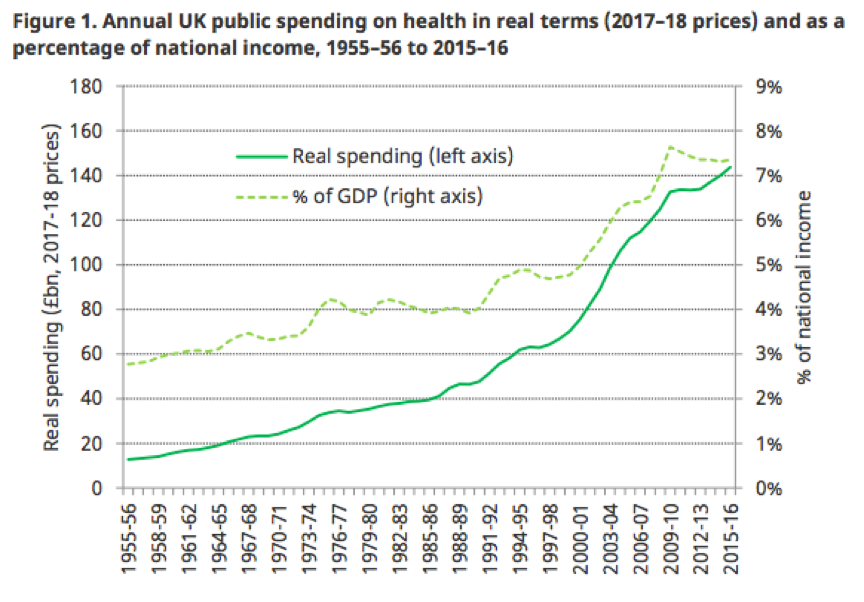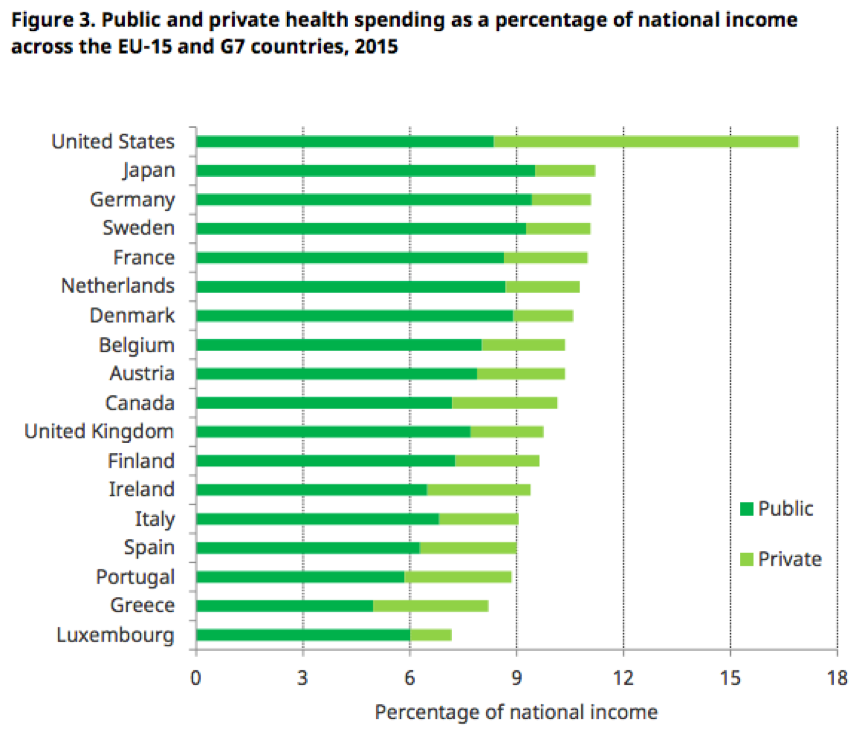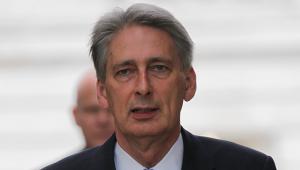Figures released by the think-tank today showed UK health spending between 1955/56 and 2015/16 went up 4.1% a year on average but just 1.3% per year on average between 2009/10 and 2015/16. The figures are in real terms – taking inflation into account.
Spending increased from £12.8bn (2.8% of national income) in 1955/56 to £143.7bn (7.4%) in 2015–16 – growing from 7.7% of public spending to 18.4% over that period.

George Stoye, senior research economist at IFS, said: “This is the lowest rate of increase over any similar period since the mid 1950s, since when the long-run average annual growth rate has been 4.1%.
“Current government plans are consistent with David Cameron’s pledge at the 2015 election to increase NHS spending by £8 billion.
“But they would leave health spending in 2019/20 below the amount needed simply to keep pace with the growth and ageing of the population seen since 2009/10, let alone the amount required to account for multiple other pressures on the health budget.”
Stoye said health spending remained the biggest single item of government expenditure, which has been protected relative to other spending areas and is taking up a growing fraction of total government spending.
He said the issue was part of a much longer term “dilemma” for governments as an ageing population and growing demand for health care drives up costs.
“We need credible strategies for dealing with this,” he concluded.
The Department of Health spending is planned to increase by £8.2bn (7.0%) between 2014/15 and 2020/21 and over the same period spending on NHS England will increase by £11.6bn (11.3%), the report pointed out.
The IFS report also showed total UK health spending, including both public and private expenditure, was in line with the unweighted EU-15 average (9.3% of national income) in 2015. However, it was below the levels of the US (16.9%), Japan (11.2%), Germany (11.1%), and France (11.0%).

The IFS has also released a report today on public spending on adult social care in England, which found that local authority spending on adult social care in England fell 8% in real terms between 2009/10 and 2016/17, when it reached £16.8bn.
Due to the growth in the UK population spending per adult fell by 13.5% (without taking into account the ageing population).











